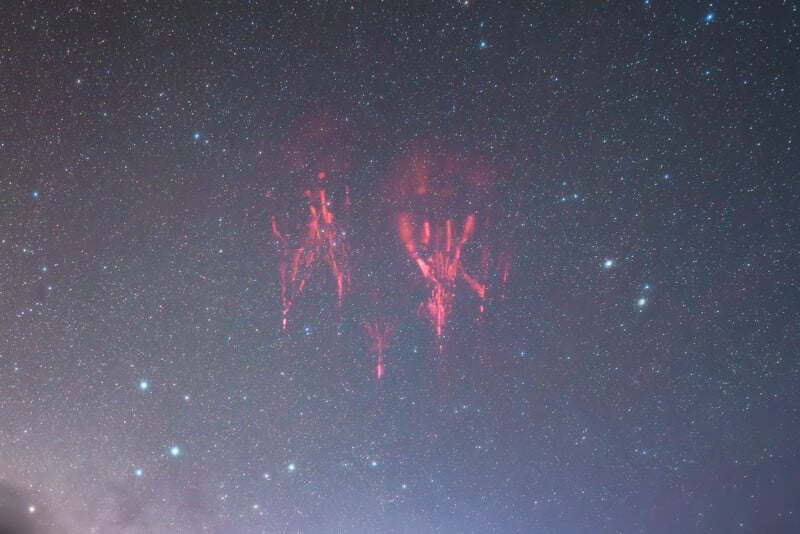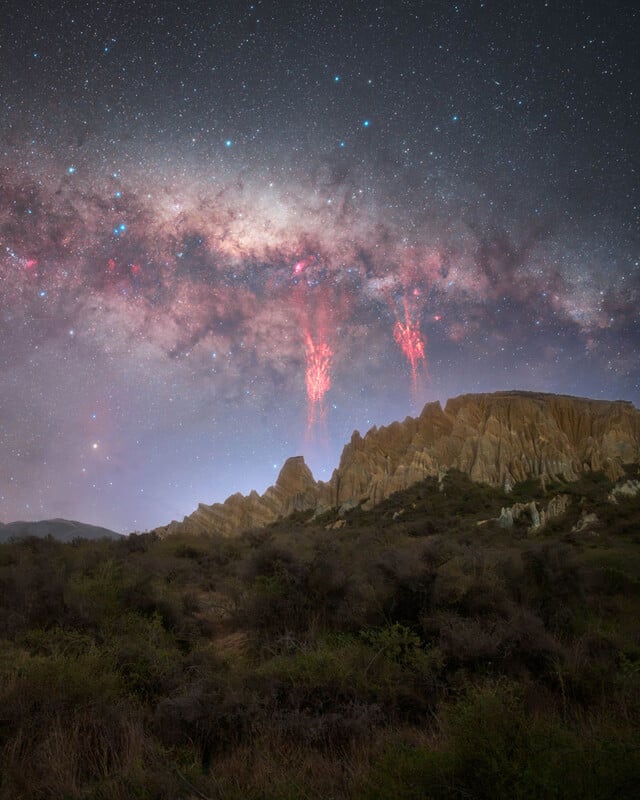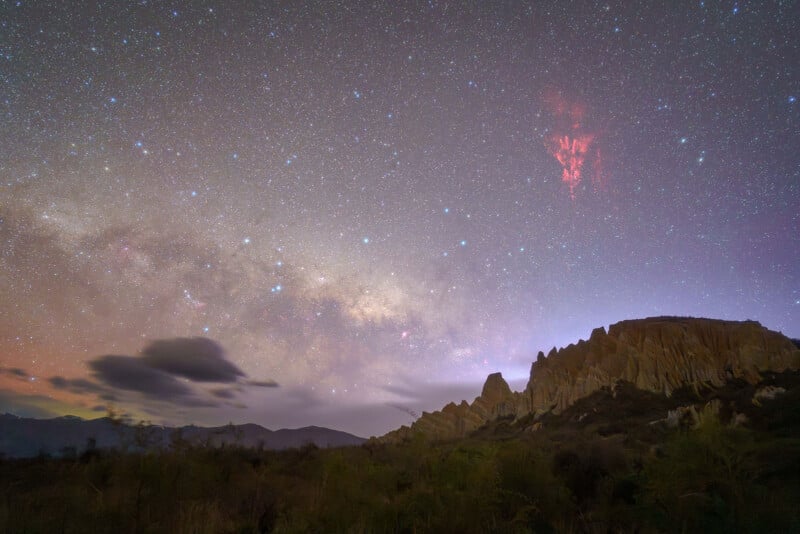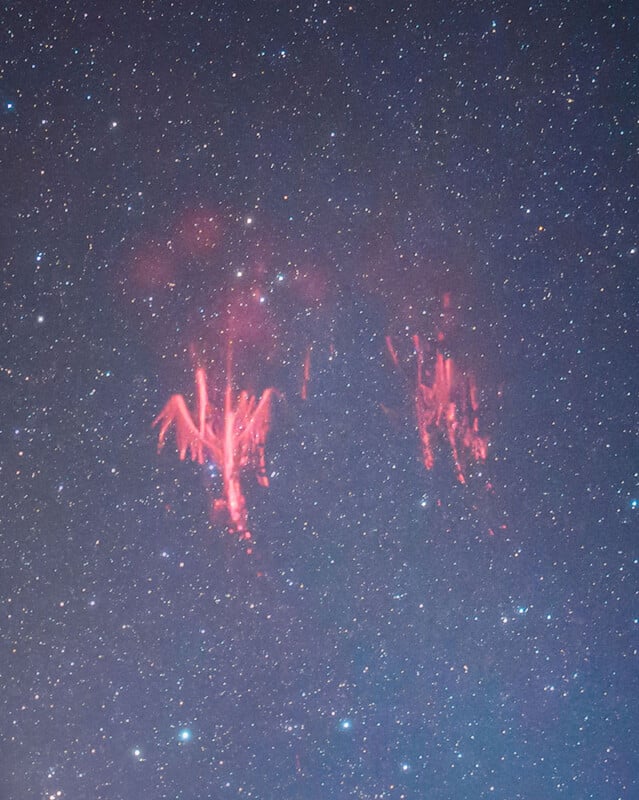While out photographing the dark skies of New Zealand last weekend, the heavens aligned for Dan Zafra as he captured lightning sprites appearing in front of the galactic core of the Milky Way.
Zafra, known for his website Capture the Atlas, says it might be the first time ever a rare and elusive lightning sprite has been photographed with the Southern Hemisphere Milky Way Galaxy in the same frame.
“On the night of October 11, I was shooting under perfectly clear skies when I began to notice faint flashes on the horizon from a distant thunderstorm over the Southern Alps,” Zafra tells PetaPixel.
“At first, they looked like normal lightning, but after a few test shots, I realized my camera was capturing red sprites.”
Red sprites, Zafra explains, are brief, large-scale electrical discharges that occur high above thunderstorms, reaching altitudes of up to 90 kilometers [56 miles].
“They’re almost impossible to see with the naked eye and last just a few milliseconds,” he continues. “Even storm chasers who spend their lives chasing lightning in places like Oklahoma or Texas can go years without witnessing one.”


Zafra calls his experience “truly remarkable,” and it was made even more magical by the Milky Way’s galactic core lining up perfectly behind the sprites.
“It was one of those moments when you know you’re witnessing something you’ll probably never see again,” he adds.
Zafra was situated on the Clay Cliffs on the South Island of New Zealand when he took the photos. He used a Sony a7 III, a Sony GM 24mm f/1.4 to capture the shot. The foreground is a two-minute exposure, which has been blended with the 10-second sky exposure.
“I also created a timelapse video that shows these sprites flashing in real time. Since they last only a fraction of a second, the video captures just how sudden and powerful they are,” says Zafra.
Red sprites are among the rarest and least-understood natural light phenomena. They were first recorded on camera in 1989, and only a few photographers around the world have captured them in high detail.
They occur above powerful thunderstorms when positive lightning discharges reach the ionosphere. Capturing them requires a mix of perfect conditions, patience, and a lot of luck.
“Seeing them move across the sky was mesmerizing,” adds Zafra. “The video adds another layer of perspective, revealing how these short-lived bursts of energy connect Earth’s atmosphere with space in the blink of an eye.”


Zafra says that to the best of his knowledge, this is the first time red sprites have ever been documented together with the Southern Hemisphere Milky Way. The aurora australis can also be seen as a faint glow.
“It shows how fleeting weather events and timeless cosmic structures can align in the same frame,” Zafra adds. “It’s moments like these that remind me why I spend so many nights under the stars.”
PetaPixel has featured Zafra’s nights beneath the stars before: earlier this year, he captured a sublime shot of the lunar eclipse together with the aurora lights.
More of Dan Zafra’s photography is available on Capture the Atlas‘ website, Facebook, and Instagram.
Image credits: All photos by Dan Zafra
First Appeared on
Source link












